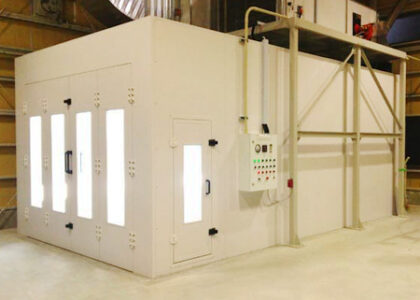The flexographic printing market had an estimated market size of US$ 8.5 billion in 2023 and is expected to reach a global market size of US$ 14.7 billion by 2034, increasing at a CAGR of 5% between 2024 and 2034. By 2024, the market for flexographic printings is likely to reach a valuation of US$ 9 billion.
The growing need for flexible packaging solutions is one factor propelling the flexographic printing market. Materials for flexible packaging, such as films and pouches, are becoming more and more necessary as customer tastes change toward sustainability and convenience. Flexographic printing is a great option for flexible packaging applications because of its affordability and adaptability.
Request For Sample Report: Elevate Your Industry Intelligence with Actionable Insights
https://www.futuremarketinsights.com/reports/sample/rep-gb-19099
The growing need for specialized and short-run printing projects presents a chance for the flexographic printing industry. Flexographic printers may benefit from providing adaptable and affordable solutions for small-batch and customized printing orders, meeting a range of consumer demands and preferences, as e-commerce and bespoke packaging continue to grow.
Key Takeaways from the Market Analysis
- The global demand for flexographic printing reached US$ 6.5 billion in 2019.
- It is expected that the water based inks would attain a 4.8% CAGR through 2034.
- It is projected that the inline-type press method for flexographic printing will be highly used and attain a 4.7% CAGR from 2024 to 2034.
- The market in the United States is anticipated to rise through 2034 at a 5.2% CAGR.
- It is projected that the flexographic printing ecosystem in the United Kingdom will evolve at a 5.6% CAGR between 2024 and 2034.
Scope Of Report
| Report Attribute | Details | |
| Growth Rate | CAGR of 5% from 2024 to 2034 | |
| Market value in 2024 | US$ 9 billion | |
| Market value in 2034 | US$ 14.7 billion | |
| Base Year for Estimation | 2023 | |
| Historical Data | 2019 to 2023 | |
| Forecast Period | 2024 to 2034 | |
| Quantitative Units | US$ billion for value | |
| Report Coverage | Revenue Forecast, Company Ranking, Competitive Landscape, Growth Factors, Trends, and Pricing Analysis | |
| Segments Covered |
|
|
| Regions Covered |
|
|
| Countries Profiled |
|
|
| Key Companies Profiled |
|
|
Competitive Landscape
Prominent companies in the global flexographic printing sector are experimenting in several domains. To produce high-quality prints, they are developing innovative printing equipment with characteristics like improved color management systems, quicker printing rates, and better registration accuracy.
To further lessen the influence on the environment, efforts are being directed toward the development of eco-friendly printing technologies, such as water-based and UV-curable inks. Improvements in substrate materials aim to improve print adherence and durability, broadening the spectrum of flexographic printing applications.
With the introduction of innovative technology and environmentally friendly solutions, startups in the flexographic printing sector want to upend established printing techniques. To obtain a competitive advantage in the market, they concentrate on creating innovative printing equipment, environmentally friendly inks, and innovative substrate materials that enhance print quality, efficiency, and environmental sustainability.
Key Developments
- In 2023, Amcor declared that it had reached a deal to buy Phoenix Flexibles, increasing its presence in the rapidly developing Indian market. Phoenix Flexibles is an Indian company with a single unit in Gujarat. It sells flexible packaging for food, home care, and personal care applications, and brings in around US$20 million in sales annually.
More Valuable Insights Available
Future Market Insights offers an unbiased analysis of the global flexographic printing market, providing historical data for 2018 to 2022 and forecast statistics from 2023 to 2033.
To understand opportunities in the global flexographic printing market, the market is segmented on the basis of offering (printing machine, printing ink), ink type (water-based inks, solvent-based inks, energy-curable inks), method (inline-type press, central impression press, stack-type press), type (narrow web, medium web, wide web), automation (automatic, semi-automatic), application (corrugated packaging, flexible packaging, labels & tags, cartons, others), end use (food & beverage, healthcare, cosmetics, consumer goods, e-commerce, electronics, others) and region (North America, Latin America, Western Europe, Eastern Europe, South Asia and Pacific, East Asia, and the Middle East & Africa).
Elevate Your Business Strategy! Purchase the Report for Market-Driven Insights
https://www.futuremarketinsights.com/checkout/19099
Key Segments Profiled in the Flexographic Printing Market:
By Offering:
- Printing Machine
- Printing Ink
By Ink Type:
- Water-based inks
- Solvent-based inks
- Energy-curable inks
By Method:
- Inline-type press
- Central impression press
- Stack-type press
By Type:
- Narrow web
- Medium web
- Wide web
By Automation:
- Automatic
- Semi-automatic
By Application:
- Corrugated packaging
- Flexible packaging
- Labels & tags
- Cartons
- Others
By End Use:
- Food & beverage
- Healthcare
- Cosmetics
- Consumer goods
- E-commerce
- Electronics
- Others

